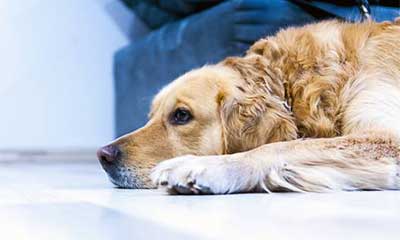Rhinoplasty - From Reasons to Recovery

The most popular plastic surgery that people undergo to improve the appearance of their faces and to solve issues with their noses is rhinoplasty.
Rhinoplasty can be done for either medical or cosmetic purposes. Breathing difficulties caused by structural issues with the nose can be resolved with rhinoplasty. However, Teenagers' noses shouldn't be altered until they have grown to adult proportions. This often occurs for girls around the age of 15 or 16, and guys around a year later.
A rhinoplasty may change:
the angle between the nose's side and the face
noticeable depressions or bumps on the bridge of the nose, depending on the breadth of the nose
the nasal septum
size and design of the nostrils
the nose's symmetrical nasal passageways
In other instances, rhinoplasty may be necessary due to a medical problem. medical causes comprise:
Nasal anomalies: A surgeon can use rhinoplasty to correct a cleft lip and palate.
Nasal obstruction: The nasal passages may become blocked as a result of structural issues with the nose. Even though a surgeon may conduct septoplasty in addition to rhinoplasty, a doctor may favor septoplasty as the surgical approach.
Deviated septum: One of the most frequent nose-related causes of breathing problems is a deviated septum. Better nasal structural alignment brought about by rhinoplasty may facilitate easier breathing.
Trauma or injury to the nose: After an injury, rhinoplasty can help to reshape the nose.
complications from an original rhinoplasty that didn't work: Someone can get a second rhinoplasty to fix the first one. This process is called reverse rhinoplasty.
What should we do to prepare for a nose job?
Find a surgeon who has experience with plastic surgery of the nose and a history of happy patients.
The procedure should be performed in an accredited facility. A skilled Rhinoplasty surgeon and a well-trained staff will be able to assess and address any complications you may have.
Schedule a consultation to discuss your objectives and to discuss your concerns regarding your nose as well as your desired changes.
Your nose and other face components will be examined by the surgeon. They can inform you if your expectations are reasonable after this assessment.
The surgeon will also take into account your overall health and should explain the dangers, recuperation time, and costs to you.
Procedure
Rhinoplasty can be done by a surgeon in a hospital, a licensed outpatient surgery center, or an accredited office-based surgical facility. It will take a maximum of 3 hours to complete the procedure
The following procedures are involved in rhinoplasty,
1.Anesthesia
Anesthesia is needed during the rhinoplasty process to minimize pain. Depending on how complicated the surgery is, a doctor may use a local or general anesthetic.
A doctor may use a local anesthetic to numb the face if the operation is straightforward. However, general anesthesia will be needed if the procedure is more involved.
2. The incision
The process used by the surgeon to do the rhinoplasty might be open or closed.
In an open rhinoplasty, the columella—a thin band of tissue that divides the nostrils—is sliced by the surgeon.
For patients who need substantial reconstruction, a surgeon can employ the open method since it provides better access to and increased visibility of the nasal tissues.
A surgeon may do closed rhinoplasty if a patient's nasal tissues only need modest correction. The closed rhinoplasty treatment has the benefit of leaving no visible scars because the surgeon performs the process by cutting across the interior of the nose.
3. Changing the nose's shape
Depending on the patient's expectations, the surgeon may perform any of the following changes after gaining access to the nasal structures:
altering the nose's ridge, tip, length, or width, bringing the nose's symmetry back, or fixing a deviated septum
The surgeon might do this by scraping away bone or cartilage. The surgeon may occasionally introduce cartilage transplants. Typically, they will remove cartilage from the septum. They will occasionally use rib or ear cartilage.
4. Closing the wound
To speed up the healing process, the surgeon will close the incision with a suture, or stitch, and apply a plastic or metal splint to the nose. This is the final step.
How Dangerous Is a Rhinoplasty?
Surgery of any kind carries complications. Bleeding, infection and anesthesia-related allergic reactions are a few of these. Rhinoplasty risks include:
Loss of sensation
Nosebleeds
the base of the nose is scarred.
Small blood vessels on the skin's surface that are bursting
Swelling
irreversible nerve damage
a second or third surgery is required
Nose Job Recovery
For the first week following a nose job, most people wear a nasal splint. For at least 24 hours following the procedure, you must keep your head raised. After surgery, you should anticipate some swelling and bruising around the eyes, which should start to go down by the third day. It might last for two weeks.
Expect a small amount of swelling in your nose, which likely only you and your surgeon will notice. The next six months will see an end to this. Your nose's final shape will become clear once it has fully recovered.
Bottomline
A rhinoplasty is a surgical operation to change the nose's appearance. Rhinoplasty procedures may be desired for either cosmetic or therapeutic purposes.
Open and closed rhinoplasty are the two different types of rhinoplasty operations. Depending on how much of a person's nose needs to be rebuilt, a surgeon will decide which treatment to use.
Although rhinoplasty is a highly popular treatment, there are many risks involved. The most important thing is to select an effective surgeon for you since otherwise, we cannot guarantee the results, and occasionally you may need to have revision surgery.





Comments